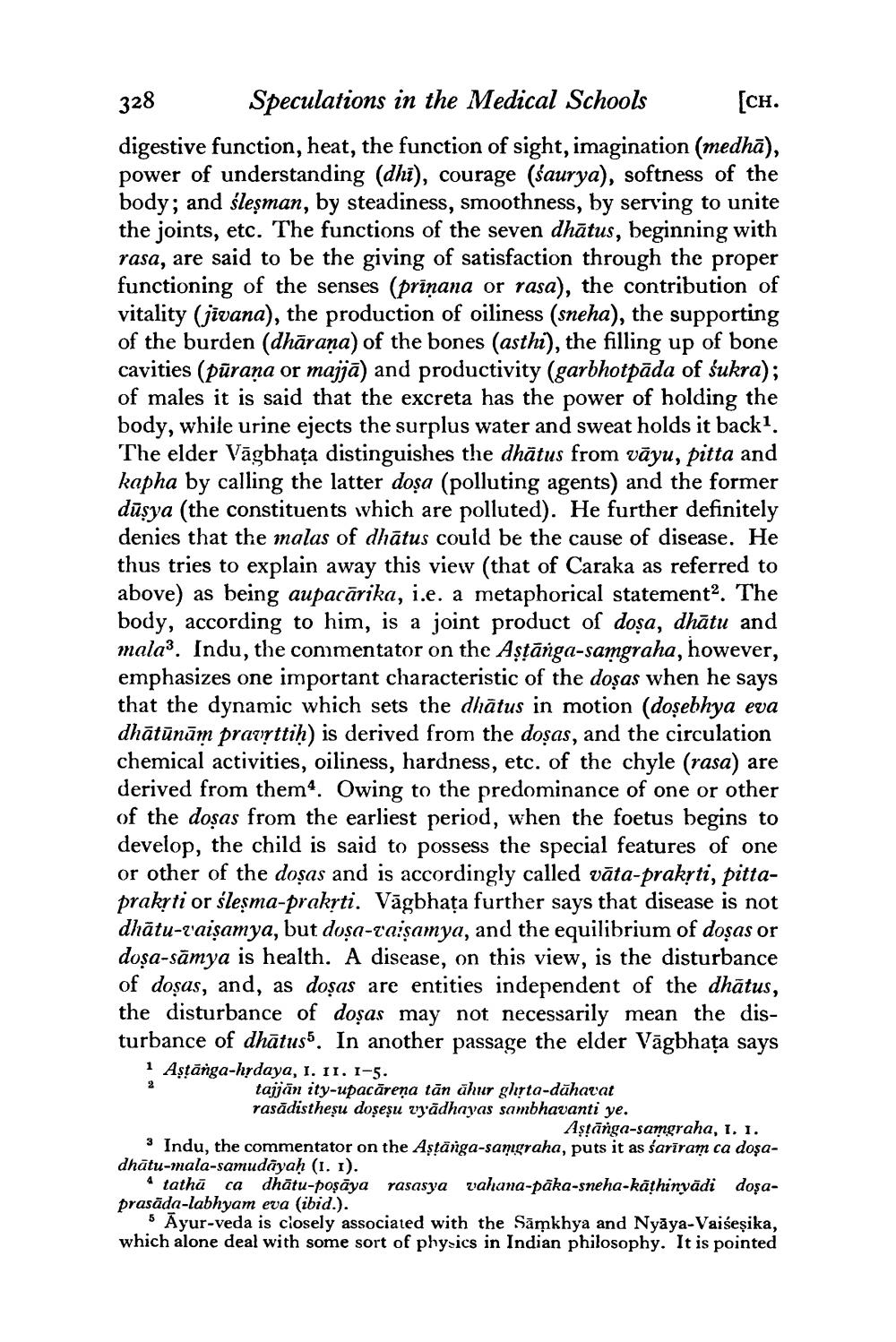________________
328 Speculations in the Medical Schools (CH. digestive function, heat, the function of sight, imagination (medhā), power of understanding (dhi), courage (saurya), softness of the body; and śleşman, by steadiness, smoothness, by serving to unite the joints, etc. The functions of the seven dhātus, beginning with rasa, are said to be the giving of satisfaction through the proper functioning of the senses (prīņana or rasa), the contribution of vitality (jivana), the production of oiliness (sneha), the supporting of the burden (dhārana) of the bones (asthi), the filling up of bone cavities (pūrana or majjā) and productivity (garbhotpāda of śukra); of males it is said that the excreta has the power of holding the body, while urine ejects the surplus water and sweat holds it back1. The elder Vāgbhața distinguishes the dhātus from vāyu, pitta and kapha by calling the latter doşa (polluting agents) and the former dūşya (the constituents which are polluted). He further definitely denies that the inalas of dhātus could be the cause of disease. He thus tries to explain away this view (that of Caraka as referred to above) as being aupacārika, i.e. a metaphorical statements. The body, according to him, is a joint product of dosa, dhātu and malay. Indu, the commentator on the Aștānga-samgraha, however, emphasizes one important characteristic of the doșas when he says that the dynamic which sets the dhātus in motion (doşebhya eva dhātūnām pravrttih) is derived from the dosas, and the circulation chemical activities, oiliness, hardness, etc. of the chyle (rasa) are derived from them4. Owing to the predominance of one or other of the dosas from the earliest period, when the foetus begins to develop, the child is said to possess the special features of one or other of the doșas and is accordingly called vāta-praksti, pittaprakrti or śleşma-prakrti. Vāgbhața further says that disease is not dhātu-vaisamya, but doșa-raisamya, and the equilibrium of doșas or dosa-sāmya is health. A disease, on this view, is the disturbance of doșas, and, as doșas are entities independent of the dhātus, the disturbance of doșas may not necessarily mean the disturbance of dhātus. In another passage the elder Vāgbhata says 1 Aştānga-hrdaya, 1. 11. 1-5.
tajjān ity-upacāreņa tān āhur ghrta-dāhavat rasādisthesu doseșu zy'ādhayas sambhavanti ye.
Aştānga-samgraha, 1. 1. 3 Indu, the commentator on the Aştārga-samıgraha, puts it as śarīram ca dosadhātu-mala-samudayah (1. I).
4 tathū ca dhātu-poşāya rasasya vahana-pāka-sneha-kāțhinyādi dosaprasāda-labhyam eva (ibid.).
5 Ayur-veda is closely associated with the Sāmkhya and Nyāya-Vaiseşika, which alone deal with some sort of physics in Indian philosophy. It is pointed




